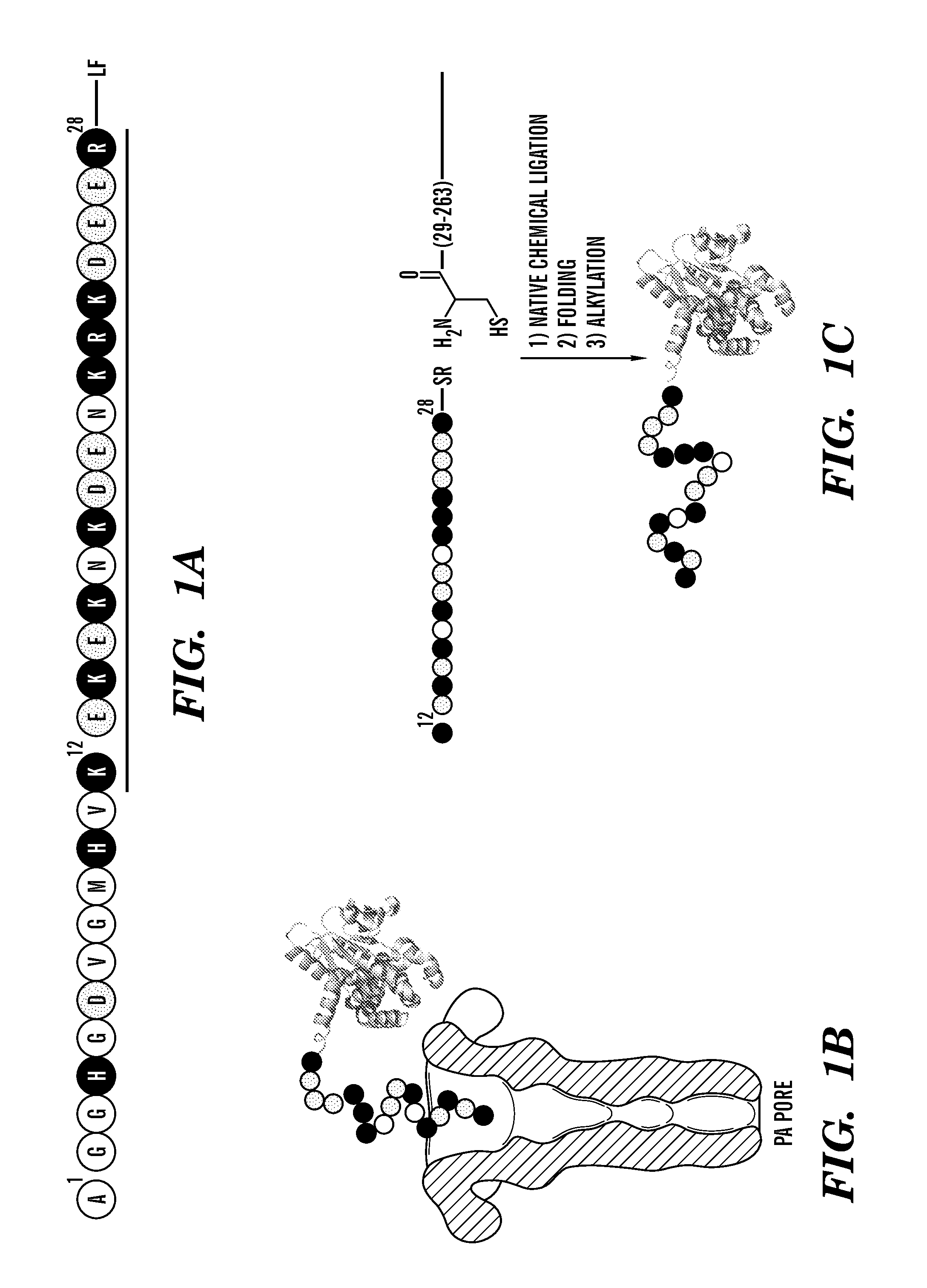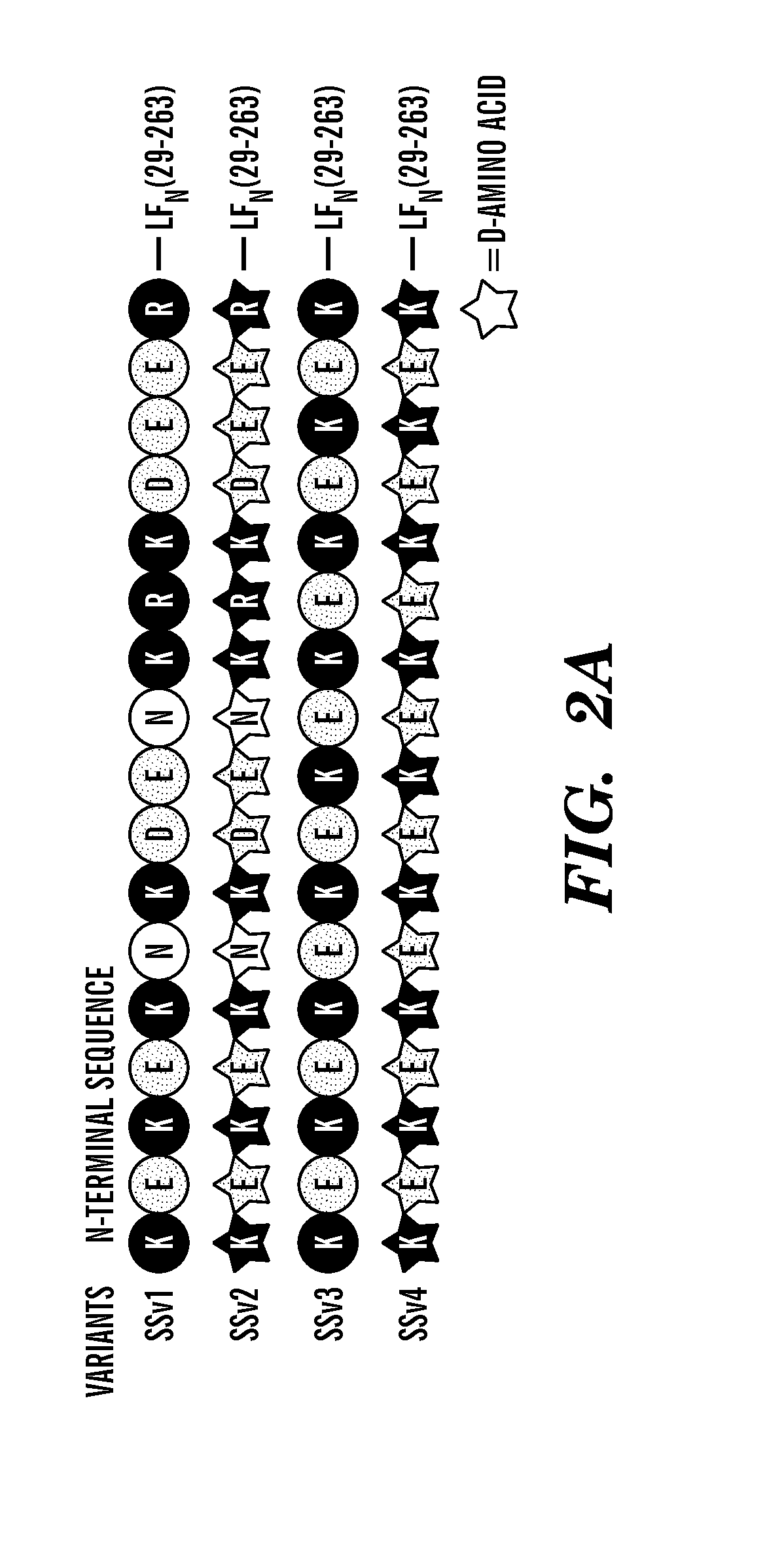Method for delivering agents into cells using bacterial toxins
a technology of delivering agents and toxins, applied in the field of delivering molecules, can solve the problems of limited selectivity and current technologies used to gain therapeutic access to the cytosol, and achieve the effect of efficient delivery
- Summary
- Abstract
- Description
- Claims
- Application Information
AI Technical Summary
Benefits of technology
Problems solved by technology
Method used
Image
Examples
Embodiment Construction
[0042]We have developed a technology for the efficient delivery of non-natural chemical entities, i.e. entities comprising modified amino acids, entities not naturally produced by the eukaryotic cells or the like, to the cytosol of eukaryotic cells. The technology relies on the use of the N-terminal domain of lethal factor and protective antigen which when added to cells acts to form a nanomachine that delivers functional bioactive molecules to the cytosol of a target cell. The LFN delivery module is shown in FIGS. 4A-4C. The chemical entities are covalently attached, preferably to the C-terminus of LFN or a functional fragment or modified fragment thereof by native chemical ligation or by the transpeptidase, sortase A (FIG. 6A-6B). The delivery process is highly efficient in that nanomolar concentrations of the reagents are used. For example, we have shown that D-peptide segments, cyclic peptides, and other chemical entities can be delivered using this platform (FIG. 7).
[0043]The m...
PUM
| Property | Measurement | Unit |
|---|---|---|
| molecular weight | aaaaa | aaaaa |
| molecular weight | aaaaa | aaaaa |
| molecular weight | aaaaa | aaaaa |
Abstract
Description
Claims
Application Information
 Login to View More
Login to View More - R&D
- Intellectual Property
- Life Sciences
- Materials
- Tech Scout
- Unparalleled Data Quality
- Higher Quality Content
- 60% Fewer Hallucinations
Browse by: Latest US Patents, China's latest patents, Technical Efficacy Thesaurus, Application Domain, Technology Topic, Popular Technical Reports.
© 2025 PatSnap. All rights reserved.Legal|Privacy policy|Modern Slavery Act Transparency Statement|Sitemap|About US| Contact US: help@patsnap.com



